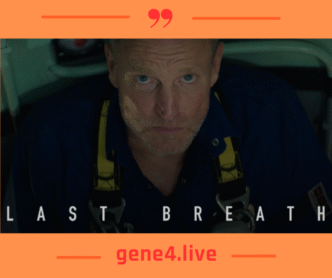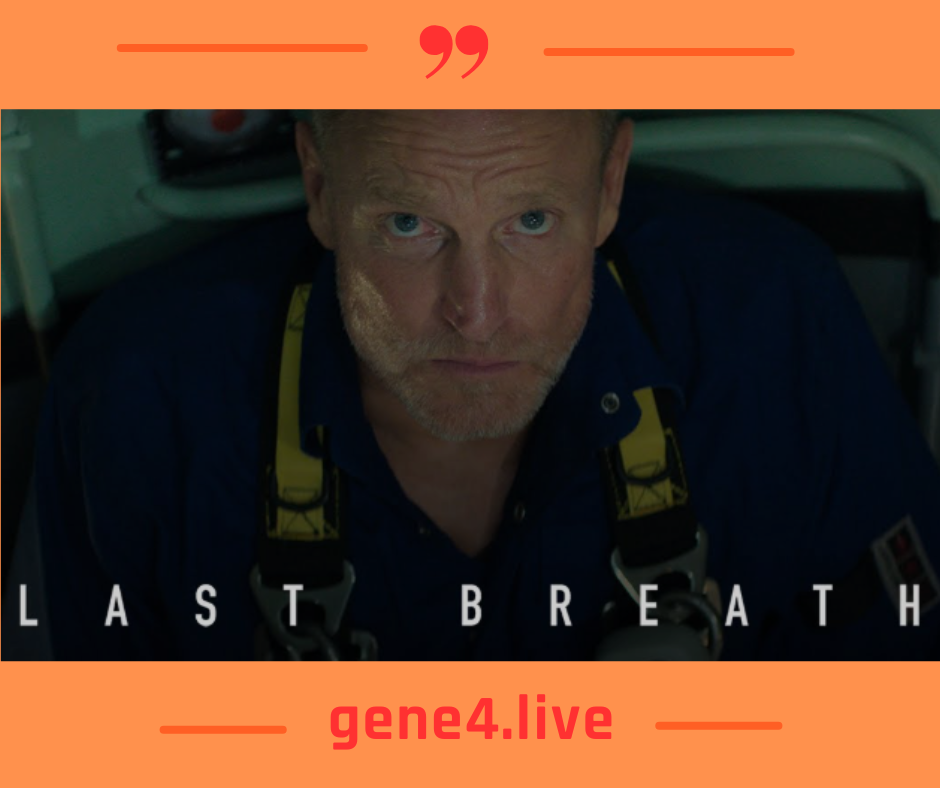

Last Breath is more than just a documentary—it’s an emotional, nerve-wracking, and visceral cinematic experience that plunges viewers deep into the murky abyss of the North Sea, offering a firsthand account of one of the most harrowing underwater survival stories ever recorded. This gripping tale of courage, isolation, and human endurance underlines the razor-thin line between life and death beneath the ocean’s surface.
A True Story That Grabs You by the Guts
At the heart of Last Breath is the terrifying real-life experience of commercial diver Chris Lemons, who found himself stranded on the seabed with less than five minutes of breathable air, more than 100 meters underwater, and without a tether to safety. The documentary doesn’t merely narrate the story—it immerses the audience in it. With real-life footage, dramatized sequences, and emotional interviews, the film makes you feel every second of Lemons’ fight for survival.
The setting—a remote location in the frigid waters of the North Sea—adds a haunting element of desolation. The unpredictable nature of deep-sea diving is showcased in full as a catastrophic failure aboard the Dive Support Vessel (DSV) leaves Lemons completely cut off from his support systems. The sheer vulnerability of being trapped in complete darkness, with oxygen depleting rapidly, is communicated in terrifying clarity.
Stunning Cinematography and Sound Design
What elevates Last Breath to an unforgettable level is its technical excellence. The cinematography is crisp and chilling. Using actual diving helmet cameras and ROV (Remotely Operated Vehicle) footage intercut with re-enactments, the film seamlessly blends reality and dramatization. The oppressive darkness of the deep sea, the claustrophobia of the diving bell, and the harsh metallic interiors of the DSV all serve to heighten the intensity.
The sound design is another standout feature. Every breath, heartbeat, and mechanical click in the diving suit is amplified, creating an unnerving soundscape that mirrors Lemons’ anxiety. The silence of the ocean becomes deafening, especially in moments of isolation where only the diver’s labored breathing punctuates the void.
Emotional Interviews and Human Drama
Last Breath succeeds because it’s not just about the science of diving or technical mishaps—it’s about people. The interviews with Lemons himself, along with his crewmates, partner, and supervisors, inject the documentary with raw emotion. Viewers gain intimate insights into their psyche during and after the event.
Hearing Lemons describe what he thought were his final moments—his thoughts about his partner, his regrets, and his acceptance of death—is deeply affecting. These human moments elevate the documentary into a profound meditation on mortality, resilience, and hope.
An Unlikely Miracle: The Rescue That Defied Logic
What sets this story apart from other survival documentaries is the miraculous twist. Despite being underwater for over 30 minutes without a breathing supply, Lemons is found alive. The sheer impossibility of his survival defies all medical and scientific logic.
The documentary explores several theories—supercooling of the brain, lack of exertion, and quick recovery efforts—but even experts remain astounded. It’s this element of the unknown, the unexplained, that gives Last Breath its enduring allure. It’s a story that scientists can’t entirely rationalize, but one that inspires awe and reverence for the fragility and power of the human body.
An Educational Dive into Commercial Diving
Beyond its emotional and narrative strengths, Last Breath serves as an educational window into the world of saturation diving. The film offers a detailed look into the day-to-day lives of deep-sea commercial divers—how they eat, sleep, and work inside tiny pressurized chambers for weeks at a time.
The risks, the pressures—both literal and metaphorical—and the sophisticated technology that supports them are all explored with precision. For viewers unfamiliar with the underwater industry, the film is a fascinating introduction to a world rarely seen but vital to modern infrastructure and energy supply.
Critical Reception and Viewer Impact
Since its release, Last Breath has garnered critical acclaim for its storytelling, realism, and emotional impact. It currently holds high ratings on platforms like Rotten Tomatoes, IMDb, and Letterboxd, reflecting its success in resonating with both critics and audiences.
Many reviewers have highlighted the film’s honesty, technical authenticity, and emotional depth. Unlike dramatized Hollywood thrillers, Last Breath doesn’t embellish—it shows how real courage, calm under pressure, and teamwork can result in unimaginable outcomes.
Comparison with Fictional Counterparts
What makes Last Breath stand out even more is its comparison with fictional underwater survival stories like The Abyss, Sanctum, or Deepwater Horizon. Where those rely on CGI spectacle and fabricated drama, Last Breath finds all the suspense it needs in the truth. No fictional script could have written a more powerful climax than Chris Lemons’ real-life resurrection from the seabed.
Why You Should Watch Last Breath
If you’re looking for a film that combines intensity, emotion, and truth, Last Breath is a must-watch. It’s a documentary that stays with you, not because of shock value, but because of the human strength it reveals. It’s a story about how hope can survive in the darkest depths, and how miracles sometimes come from the cold, black ocean floor.
This is not just a film for diving enthusiasts—it’s for anyone who appreciates stories of survival, courage, and the power of human connection. With its masterful direction, stellar pacing, and unforgettable story, Last Breath earns its place as one of the most gripping survival documentaries of our time.











